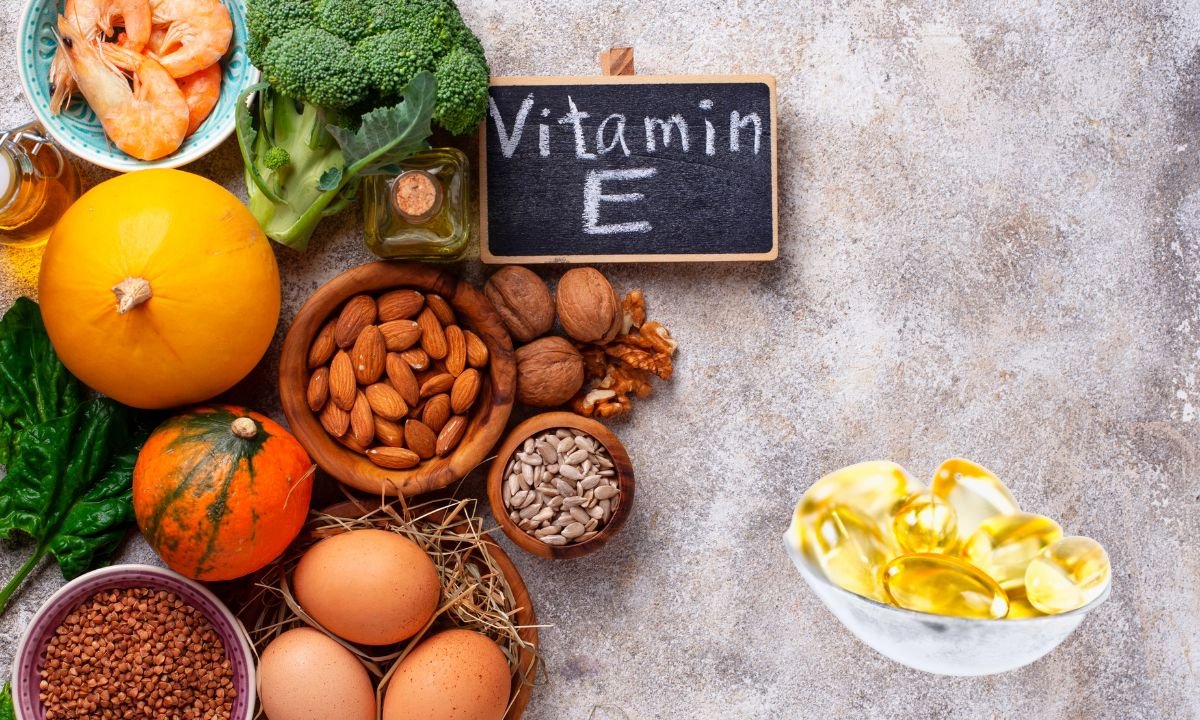Hello, amazing readers! Vitamin E acts as an antioxidant in our body and is a fat soluble vitamin. It helps in reducing cell damage and helps in protecting our body from recurring infections. Vitamin E also helps in reducing cardiovascular diseases related deaths if consumed regularly. In this blog, we will dive deep into understanding all the benefits and nutritional sources of vitamin e and also address all the necessary questions regarding the same in detail.
About Vitamin E:
Usually when we talk about vitamins, vitamins C and D are the hot topics of any wellness debate or conversations. As common as vitamin E is, we often forget about this antioxidant rich, DNA repairing and immunity enhancing vitamin.Vitamin E increases immunity and prevents blood clots from forming in the arteries. As per the article by wellhealthorganic.com Vitamin e can help in reducing the occurrence of atherosclerosis which is the buildup of cholesterol and fat in the arteries.
Vitamin E has also been known to prevent free radicals from forming which protects from cellular damage in certain circumstances. There is much research on the use of vitamin E to reduce or contain a lot of chronic diseases like cancer, vision loss, etc. However, it has been noted that many results from studies have shown conflicting outcomes, this has led to diminishing use of vitamin E to treat chronic diseases. Doctors are sceptical in recommending high doses of it due to this reason.
What are the health benefits of vitamin E?
There are numerous health benefits of vitamin E, some of them are explained in detail as follows:
- Vitamin e helps in reducing pelvic pain and easing menstrual cramps in women who have dysmenorrhea and endometriosis.
- Vitamin e helps in lowering high blood pressure and cholesterol. There are many researches showing the use of vitamin e in mitigating heart diseases and factors associated with it.
- Children and adults with asthmatic symptoms who consume prescribed doses of vitamin e would benefit in an improved lung health.
- When there is an accumulation of fat on the liver of people who do not consume much alcohol it is known as non-alcoholic fatty liver disease, consumption of vitamin e ensures in ailing this particular disease.
- Cognitive decline may be prevented from taking regular vitamin e
- Vitamin e also helps in reducing inflammation and strengthening the immune system for older people.
- It helps in managing diabetes. Having vitamin E is also good for eyesight,it can help prevent the formation of cataracts.
- As it is an antioxidant, it keeps the skin really healthy. Many people actively look for vitamin E in their skincare products ingredients.
- It also controls the symptoms of osteoarthritis.
As stated above this antioxidant rich vitamin has many health benefits, but what are the ways in which we can consume vitamin e? Let us keep reading to find out.
Natural food sources of vitamin E:
There are various categories of fruits and vegetables which are naturally a good source of consuming vitamin E. They are as follows:
- Fruits: Mangoes, avocados, kiwi, cranberries, apricot. These fruits are not rich in vitamin E but also contain healthy fats which are good for the body.
- Vegetables: Asparagus, beet greens, spinach, collard greens, pumpkin, red bell pepper and tomatoes etc, are also rich in vitamin E
- Oils: oils made for soybean, sunflower, cottonseed, grapeseed, canola and rice bran are also good sources of vitamin E
- Seeds and nuts: sunflower seeds, almonds, pistachios, peanuts, pecans and cashew nuts.
- Other animal based food: fish, snails, dried cod, atlantic salmon, and lobster are the other natural sources of vitamin E
How to find out if you have vitamin E deficiency?
Vitamins should only be consumed when there is a particular need or a deficiency, anything in excess is never a good idea. Here we have discussed possible ways to identify if a person is vitamin E deficient or not. Following are the signs or symptoms to look out for if you have vitamin e deficiency:
- If you have weaker eyesight or retinopathy and have trouble coordinating your body.
- If you have peripheral nerve damage which tampers with your feet or hands and causes pain or weakness in the body.
- If you slowly start losing motor controls of your body, your hand eye coordination is weakened.
- If you have low immunity or have started recently observing low immune function.
- People with conditions like, crohn’s disease, cystic fibrosis,pancreatitis, ataxia, etc, are at a risk of developing vitamin e deficiency.
If you are experiencing any of the above signs or symptoms, you must consult your doctor and get a blood test to ascertain your vitamin e levels to better understand if you have the deficiency or not.
Toxicity debate and scientist prediction on vitamin E:
According to research it has been found that vitamin E found in food is completely safe to be consumed. Vitamin E consumed as a form of supplements also hasn’t been found to be unsafe. All things considered, healthy people who take supplements do not experience any negative side effects. However, excessive bleeding may occur, particularly in patients taking warfarin or other blood thinners at doses greater than 1000 mg per day. A daily maximum of 1000 mg (1465 IU) of tocopherol supplements has been established as the recommended amount of vitamin E, particularly for adults over the age of 19.
Additionally, due to sporadic reports of adverse health effects, scientists have debated whether vitamin E supplements may be harmful or even increase mortality risk. Researchers have attempted to answer this question by combining the results of several studies. Very small numbers of these studies suggested risk of increasing death rates. This generated a lot of buzz and attention from the media, although this was a very small part of the picture.
Certainly, a lot of the conclusions were based on insignificant research. In these examinations, high portions of beta-carotene, which has likewise been associated with abundance mortality, were once in a while joined with vitamin E.
Other vitamin E related questions and FAQs:
- What are the side effects of consuming too much vitamin E?
There is a prescribed dosage for the consumption of any supplement, anything in excess is not good for the health. Talking about vitamin e in particular, studies have shown excess consumption of it can lead to diarrhoea and nausea.
- How do I increase my consumption of vitamin E?
As stated above there are plenty of natural plant based and animal based sources of food with high levels of vitamin E. By having these foods you can easily increase the vitamin e levels in your body. If natural food sources aren’t enough, there are plenty of over the counter supplements for vitamin E available in the market.
- What is the recommended daily dosage of vitamin E?
The amount of daily dosage is set with reference to a person’s age, gender, and prior physical ailments that could clash with the daily medication of a person. Usually the prescribed dosage is 15 mg for the male and 12 mg for the female above the age of 19.
- How can one identify if they lack vitamin e?
It is very simple to track the levels of vitamin e in the body, one can easily ask for a blood test from their doctors and find out. This will help in identifying the accurate dosage and maintaining your levels.
Conclusion
Here in this blog we discussed all the necessary and relevant information there is to know about vitamin E. We analysed all the health benefits from vitamin e and gave information about the natural food sources of vitamin e in detail. We also covered the toxicity debate and the research surrounding the dosage and adverse effects of the same. In conclusion, we also answered important questions regarding the consumption, risks and benefits of vitamin E and how beneficial it is if consumed properly in correct dosage through different mediums.
















